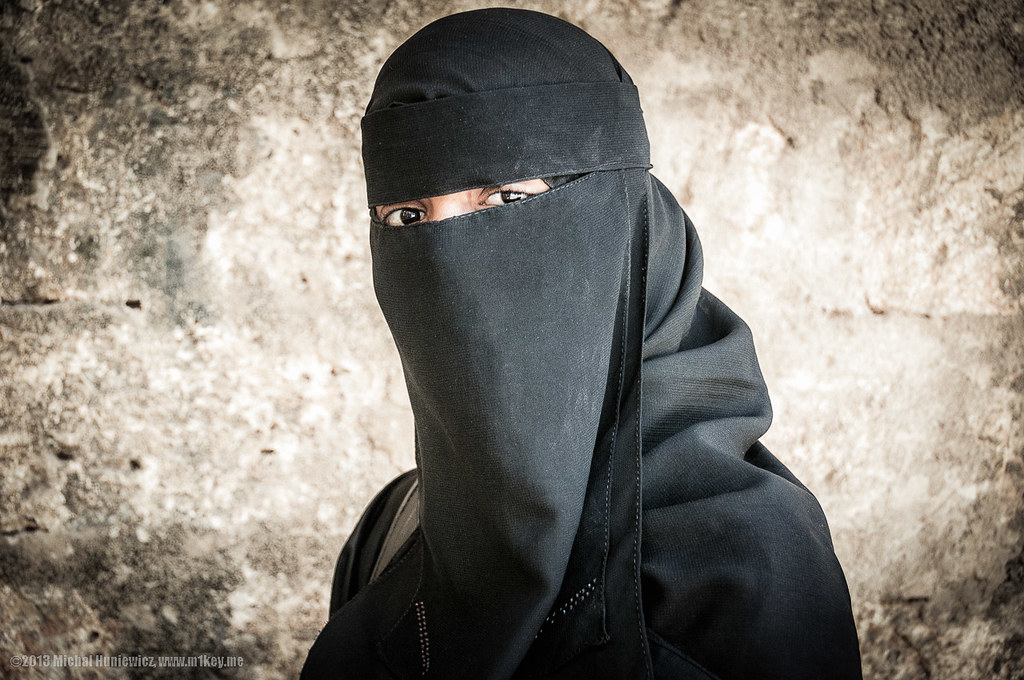Though many people know that Aisha bint Abu Bakr was married to Muhammad when she was six years old, with Muhammad consummating the marriage when she was nine and still pre-pubescent, fewer know that child marriage contracts were common in pre-Islamic Arabia.
Those who do use it to attempt to normalize Muhammad’s behavior by insisting that child marriage was totally normal in Arabia, and therefore it’s only our modern and corrupt sensibilities would be revolted by a fifty-year-old man having sex with a tiny nine-year-old little girl.
It is true that three of Muhammad’s four daughters were married before puberty: Zainab, Ruqayya, and Umm Kulthum. Only Fatima, his favorite, was held back.
However, the context of these pagan pre-Islamic marriages is quite different from the marriage between Muhammad and Aisha.
The act of marriage was, in pre-Islamic times as in Islamic times, the formation of the marriage contract–probably written by a professional scribe, but if not, at least witnessed by the community.
Consummation was the second part of the marriage that fully validated the terms of the marriage (such as the actual debt of the bride price being owed), and it did not necessarily follow the marriage contract until years after the fact. While the marriage contract was often made when a girl was prepubescent in pre-Islamic times–and therefore the marriage contract between the old man Muhammad and the little girl Aisha would not itself have been outrageous–the pre-Islamic marriage was not ever consummated until after the girl reached puberty.
Arab life was informed by their recent Bedouin past and their strong Bedouin roots. For a girl to be a full wife in Bedouin society, she had to be old enough to be the mistress of a tent. Tents were owned by the wives in all Semitic and Berber societies before Islam, not by their husbands. In pre-Islamic Arabian society, a woman divorced her husband by merely turning her tent door away–denying him the tent. However misogynistic or patriarchal the cultures were, the tent and most of its furnishings were property of women. Women also owned all the implements of cooking and owned the milk of her husband’s camels, cows, and goats. To be a mistress of a tent meant being able to fulfill all the associated duties: milking, making butter and cheese (goat as well as cow milk make butter, but camel does not), making dough, baking bread, cooking meals, and so on. She did the first stages of tanning leather when her husband killed an animal for dinner. She spun wool. She at least repaired her tent, and she may have also sewn the tack for the camels, the tents, the water skins and leather buckets, etc.
A little girl of nine or ten isn’t capable of such things. She was not fit to be made a full wife–even if pre-Islamic pagan Arab society had otherwise endorsed pre-pubescent consummation, of which there is no evidence, the necessary duties of a wife precluded it.
Even in the towns, every wife lived in a separate house under polygamy, reflecting its pastoral tent origins. Every woman was the mistress of her own house, even though the house was usually the property of her husband. Again, she made the family bread and cooked the dinner. She spun and wove cloth. These were not the tasks of a little girl.
When Aisha was taken from her father’s home and her marriage was consummated, these ancient traditions clashed with the reality of a little girl being inappropriately made a wife. She was a bad cook. She let goats eat the bread, which she wasn’t any good at making. She tried to weave Muhammad a cloak, but she prepared the wool so badly that it began to stink as soon as he began to sweat, and he threw it away. Aisha was incapable of being a wife as the Arabs had always understood wives to be any time before that point.
If there had ever been a tradition before of prepubescent consummation, Aisha would not have been burdened with the impossible tasks of an adult woman. There would have been some cultural accommodation for a wife who was still a child. But there was not In fact, I cannot find a shred of evidence of even one pre-Islamic child marriage ever being consummated before the girl reached puberty.
Instead, when a married girl was taken from her father’s house before puberty, it was considered an act of charity, as she would finish growing up in her father-in-law’s house or in the house of a senior wife. Supporting a young boy from another family is described in exactly the same terms. In contrast, the taking of a wife who is ready to fulfill her marital duties is never described in this way.
During the drought when Muhammad’s uncle Abu Talib experienced a sharp reduction in his income, Muhammad took his son Ali into his household, saying that Abu Talib should be relieved of the expense of his sons because of his dire straits. Similarly, when Abu Lahab was expressing his outrage at Muhammad’s behavior, he cried against Muhammad’s ingratitude at being relieved of the expense of his daughters, because his daughters were prepubescent at the time. These young people were burdens or expenses because they were children who did not yet fulfill their adult roles.
When Muhammad’s two middle daughters were divorced and sent back to their father in 613, it is explicitly noted that they were returned without a brideprice because they were still virgins. Most likely, Abu Lahab wanted to separate them from Muhammad’s influence around 610, when Muhammad began prophesying. So for three years, Muhammad’s daughters lived in the household with their husbands, and their husbands did not have sex with them. There could be no explanation for this if pre-Islamic Arabs accepted sex with pre-pubescent girls. However, the Arabs rejected pre-pubescent sex, then it would be entirely normal for girls to not have been violated as children, even though they were living in the same house as their husbands.
So why would Arabs commonly contract marriage long before girls were of an age to be made a wife, if they rejected prepubescent consummation.
First, arranged marriages were the norm among pre-Islamic Arabs, and so the consent of the parties involved was secondary to the main point of reinforcing tribal bonds. Where the consent of the parties is relatively unimportant, marriages are often arranged between children. The nobility in Europe is a case in point–these child-marriages could be annulled when the children reached the age of consent and objected, but the practice of making marriage alliances involving very young children was still fairly common. In the pre-Islamic Hejaz, large sums of money or land was rarely an issue, since the Hejaz was the poorest part of all of Arabia and would remain so. Instead, the marriages were more about reinforcing tribal bonds, particularly with marriages to near relatives, resulting in high levels of endogamy (that is, marriage between close relations).
Even today, the most “ideal” marriage in traditional Islamic societies is considered to be marriage of first cousins. The rates of genetic disease doubles with even with one first-cousin marriage, and generations of first-cousin marriage only further increase the risk, yes this practice persists. One reason that the preference for first-cousin marriage continues to be so strong even in the absence of true tribal societies is that Muhammad himself married cousins. But another reason is that women have so very few rights under Islam that one of the only protections they have against the most extreme forms of abuse is family ties and family pressure–it is felt that a husband who is a cousin is more likely to treat his wife well and, in low-trust shame societies in general, that a cousin is more trustworthy than someone outside the family.
The second reason to have child marriage contracts with long-delayed consummation was the high level of slavery and slave-raiding in Arabian culture. Different tribes frequently staged raids on each other for the purpose of taking children between the ages of about six and twelve as slaves. But if a girl was already married to a free man, she would (technically at least) no longer be eligible to be made a slave, because the master of a slave obtained complete control over that slave’s body. Because she already had a husband, he already had a legal claim to sexual access to that woman, and anyone taking her as a slave would potentially be committing adultery against her husband.
This cultural quirk meant that it was in the parents’ and the girls’ best interests to get their daughters legally married off long before they were ready to be made wives. If someone did come and abduct the girl anyway, if she could be tracked, she could be reclaimed with a small ransom, or else the offenders would risk a blood feud.
Muhammad, of course, changed all of these rules, letting his followers rape their captives regardless of their marriage status and chiding his jihadis for feeling any moral qualms about indulging in their basest lusts.






